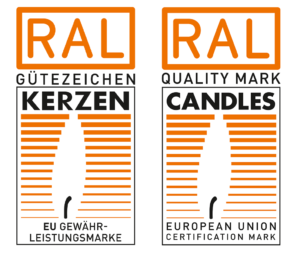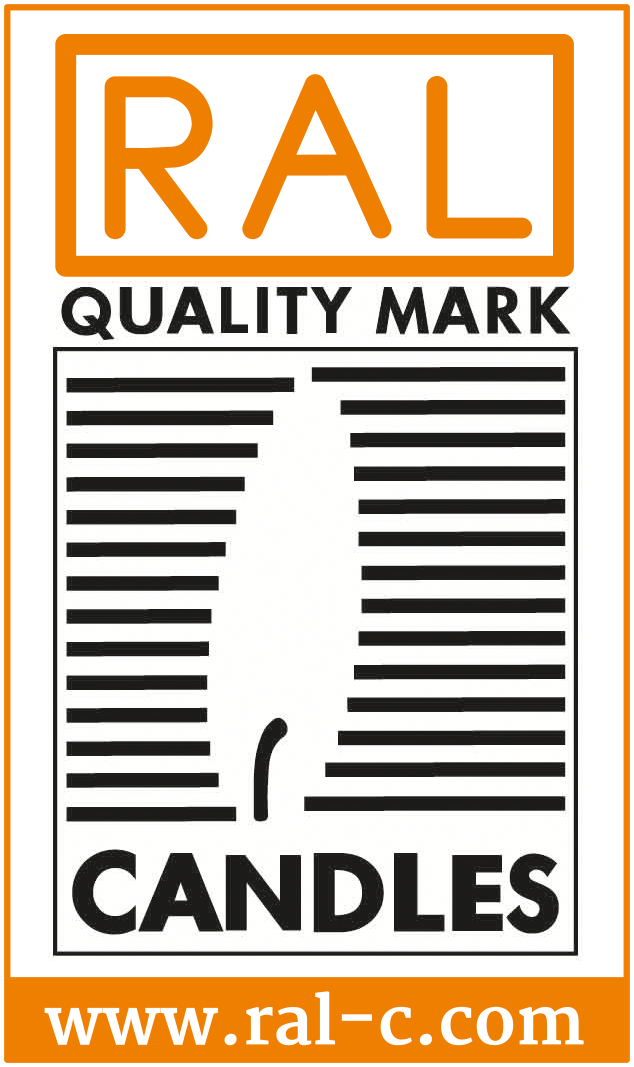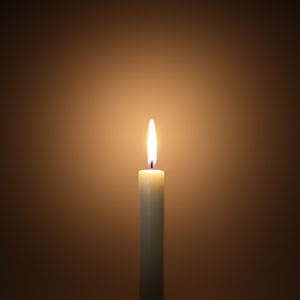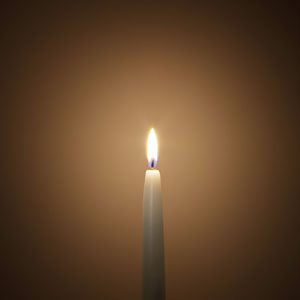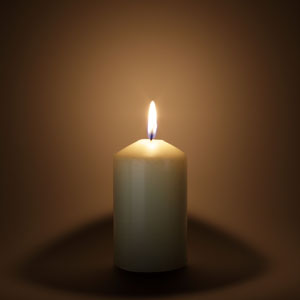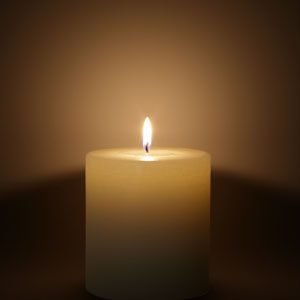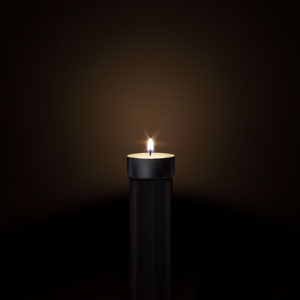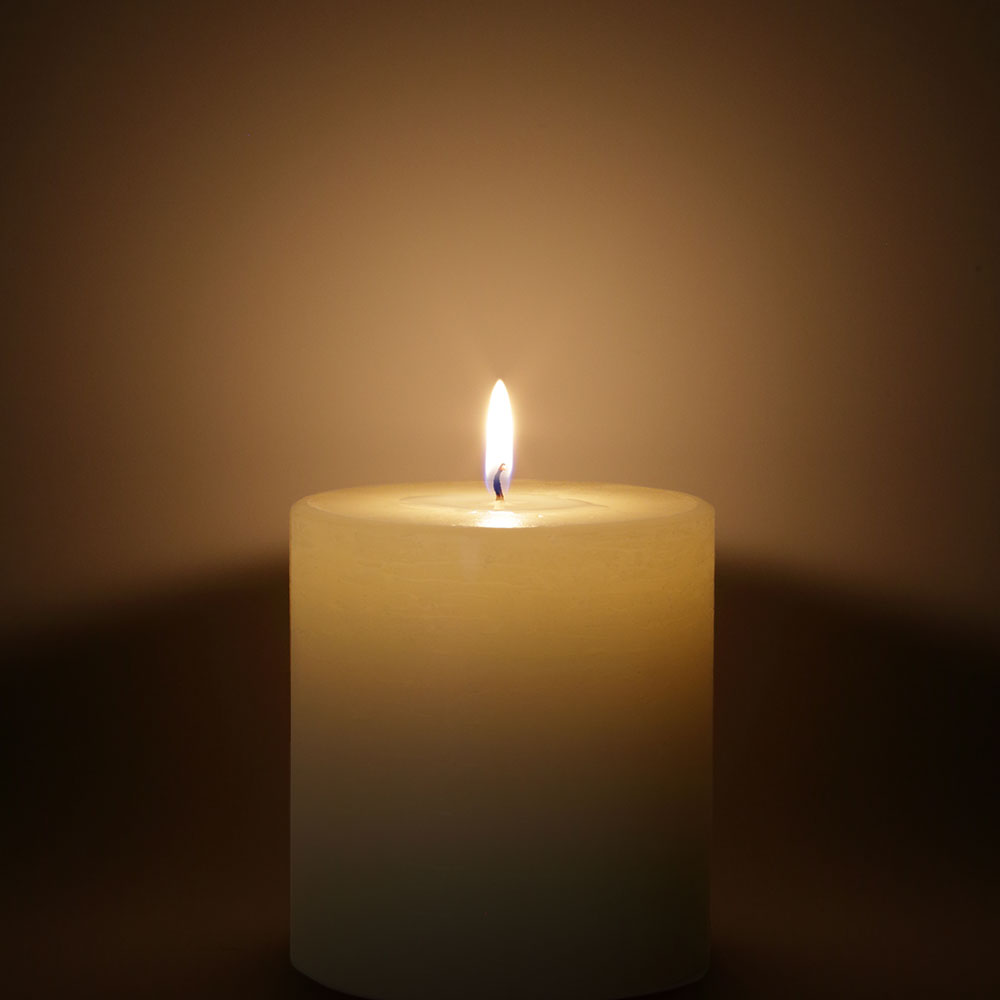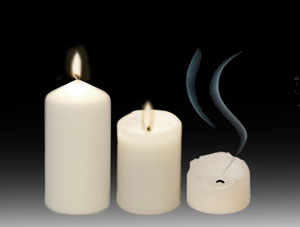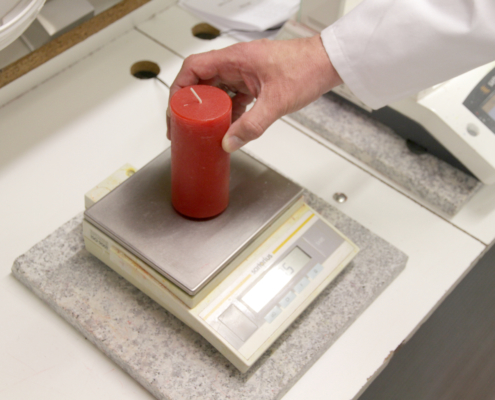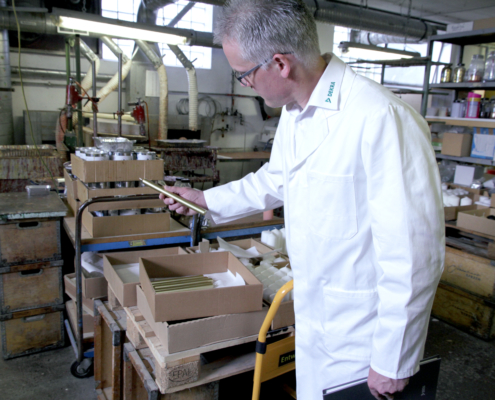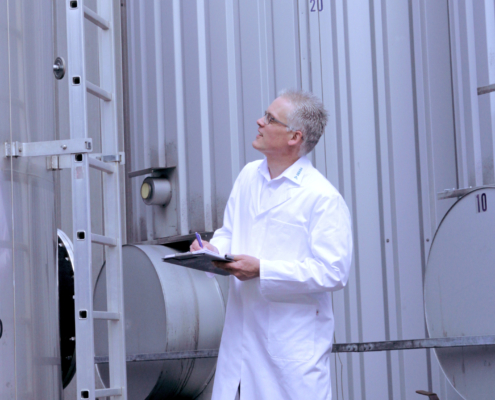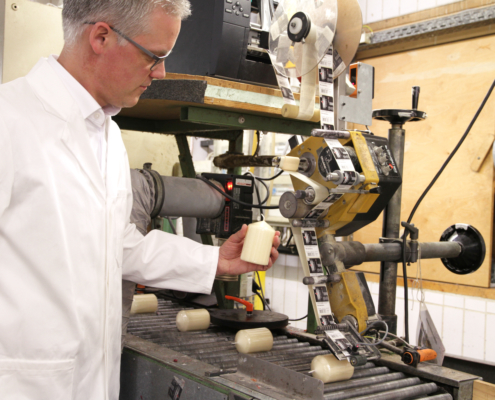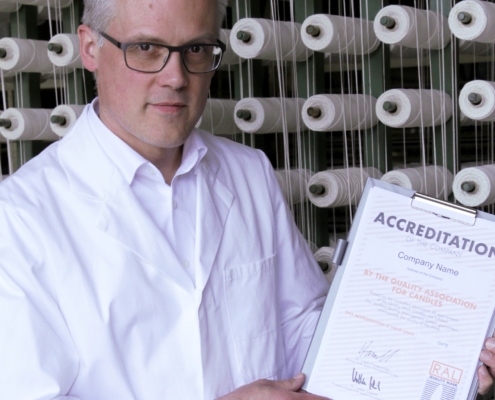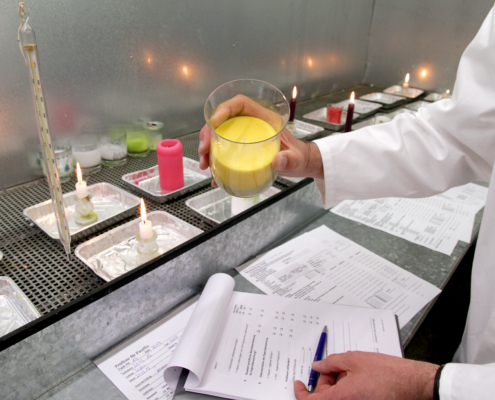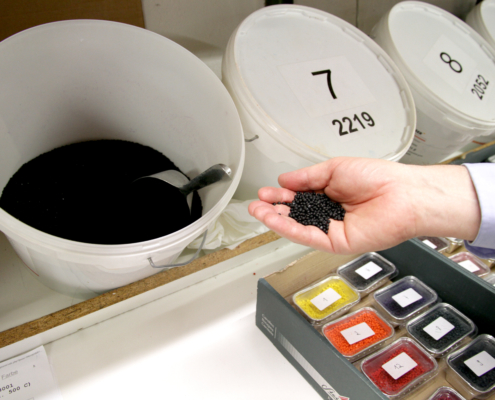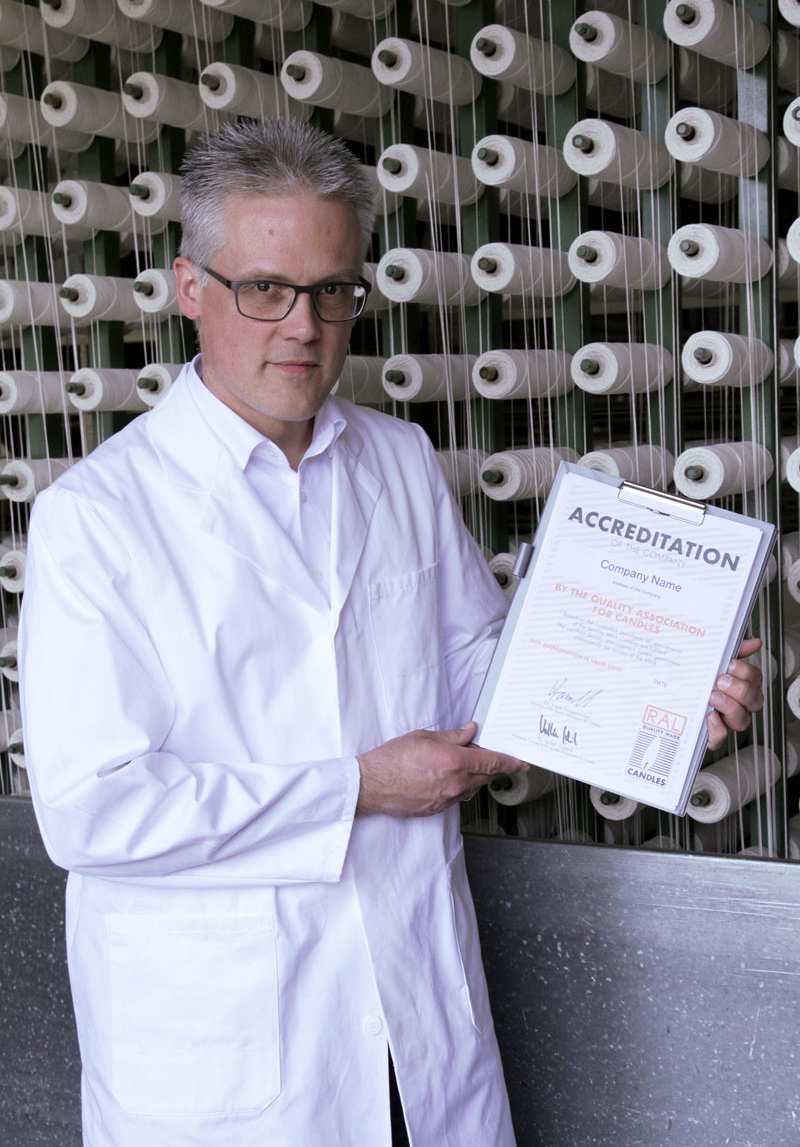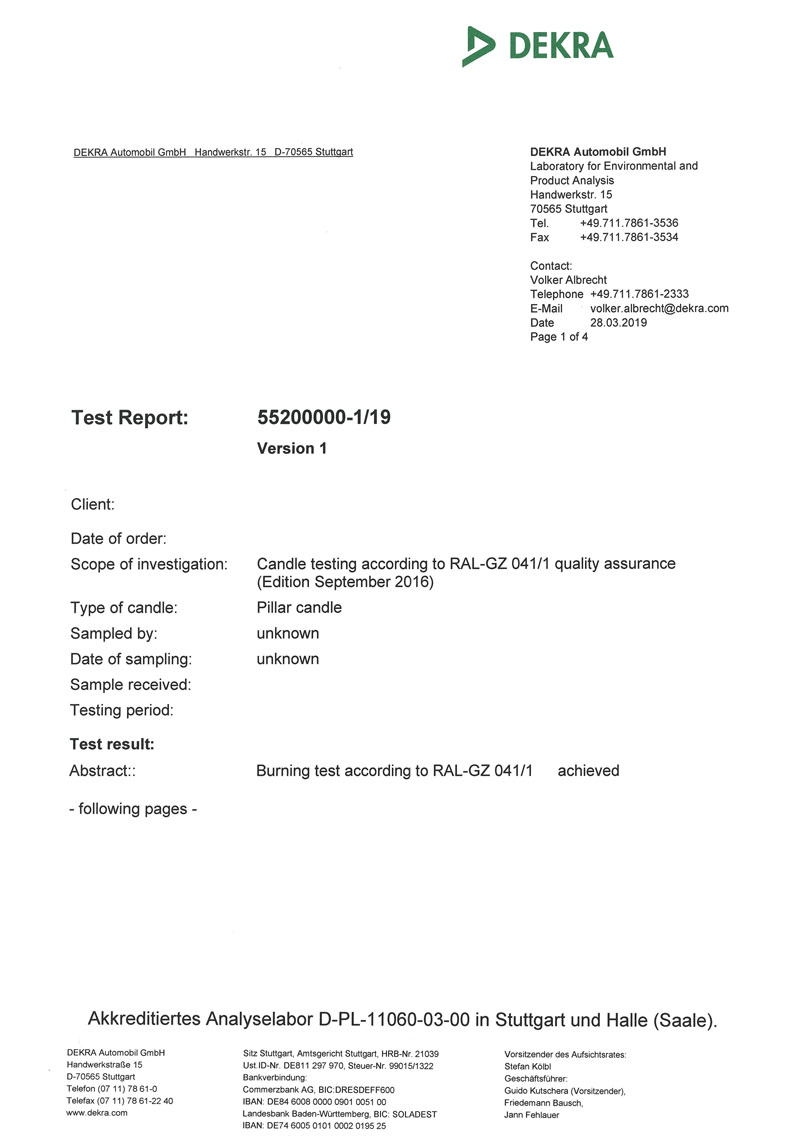Extract from General Quality Assurance and Test Specifications for Candles RAL-GZ 041
1. Scope
-
Household candles
-
Taper candles
-
Pillar candles
-
Lights
-
Tealights
-
Memorial candles
Find out more
These General Quality Assurance and Test Specifications determine the content and scope of quality assurance measures and include explanations of how quality-certified candles are marked. Within the context of specific quality assurance and test specifications, reproducible quality criteria are defined for the candle (household candles, taper candles, pillar candles, etc.), lights, tealights and memorial candles product ranges.
2. Principle
Candles bearing the quality mark need to meet the requirements of preventive health protection
Find out more
The General Quality Assurance and Test Specifications, in conjunction with the relevant specific quality assurance and test specifications for candles, lights, tealights and memorial candles, hereinafter referred to as the “Requirements of the Quality Mark for Candles”, apply to the principles for assessing quality-certified candles.
Candles bearing the quality mark need to meet the requirements of preventive health protection.
In particular, Appendix 1, “Requirements for raw and auxiliary materials for health protection” applies. This is continuously updated based on new scientific information.
3. Other applicable regulations, guidelines and standards
Find out more
Quality assurance requires compliance with the guidelines listed below. Those sections referring to the scope of the General and Specific Quality Assurance and Test Specifications shall be authoritative.
- EN 15426 candles
- Soot properties specifications
- DGF standard methods
- ASTM F2417 – 11 (plastic container flammability) – IFRA standards.
Note: RAL 040 A2 and RAL 040 B2 have been withdrawn by RAL without replacement due to lack of application in the industry. The quality assurance and test specifications only partially refer to some technical requirements of these former regulations. Referring to these regulations for promotional purposes is not permissible.
4. Terms and definitions
Candles are light sources with one or several flammable wicks that are encased by a solid or semi-solid fuel at room temperature (20°C to 27°C).
Find out more
4.1 Candles
Candles are light sources with one or several flammable wicks that are encased by a solid or semi-solid fuel at room temperature (20°C to 27°C).
4.1.1 Paraffin candles
Fuel consists of paraffin.
4.1.2 Stearin candles
Fuel consists of at least 90% stearin. However, it is permissible to apply a non-stearin coating to the body of the candle. This coating material may constitute up to 10% of the candle’s weight.
4.1.3 Beeswax candles
The sole designation “beeswax candle” is only permissible if the fuel of the candle consists of beeswax without any additional component.
If a fragrance and/or dye is added to the beeswax, an explicit reference to this type of addition must be added to the designation “beeswax candle”.
If the fuel contains a proportion of beeswax, e.g. 10% of the weight, or if the candle is only coated with a layer of beeswax, this proportion or layer of beeswax can be specified. However, the manner in which this information is given must not give the impression that the candle is made of a greater proportion of beeswax than is actually contained in the candle. It is not permissible to use the designation “beeswax” in such a way as to give the impression that the product is a beeswax candle in accordance with section 4.1.3.
4.1.4 Self-extinguishing candles
Candles marketed as “self-extinguishing” must extinguish themselves at the end of their burning time, and their structural design must effectively prevent the ignition of the surface they are placed upon.
4.2 Oil lights
Oil lights consist of a solid fuel with a wick that is enclosed by a rigid shell.
The designation “oil light” may be used only if the fuel consists exclusively of hydrogenated vegetable oil or solid vegetable fat.
For “composition oil lights”, oils or fats of animal origin may be used in addition to solid, hydrogenated or non-hydrogenated vegetable oils or fats.
They are mixed with waxes, solid fatty acids or solid hydrocarbon compounds.
The proportion of solid, hydrogenated or non-hydrogenated vegetable or animal oils and fats in composition oil lights must be expressed as a percentage and must not be less than 30%.
5. Dimensions and weights
The distance between the base of the candle and the point of emergence of the wick at the tip of the candle is considered the measure of candle length. The maximum diameter is taken as the candle’s diameter.
The requirements only apply insofar as they are stated on the sales package.
6. Quality assurance
Quality assurance includes:
Sampling
Find out more
Quality assurance is carried out on finished candles intended for sale.
The test specimens are to be taken from the respective current production line.
The number of samples in relation to production output is coordinated with the external quality assessment institute.
Initial assessment
Find out more
The passing of an initial assessment is the prerequisite for the award and use of the Quality Mark for Candles. The initial assessment needs to determine whether the applicant’s products meet the requirements of the Quality Mark for Candles. By presenting a manufacturer’s certificate from their supplier, the applicant must demonstrate that the “requirements for the selection of raw and auxiliary materials used” as set out in Appendix 1 to these Quality Assurance and Test Specifications are complied with.
The initial assessment is arranged by the Quality Committee of the Quality Assurance Association, with the task of carrying out the assessment entrusted to an independent recognised inspection body or a sworn neutral expert.
The initial assessment also serves to establish whether the conditions for continuous compliance with the requirements of the Quality Mark for Candles are met. The manufacturer is obliged to present the assessment records (e.g. assessment reports) available to date to the external inspector for inspection at the time of the initial assessment, if so requested. The external inspector will prepare a report of the initial assessment. The applicant and the Quality Committee of the Quality Assurance Association will each receive a copy of the assessment report. To carry out the initial assessment, the designated inspector must use forms specified by the Quality Assurance Association.
Internal quality assurance
Find out more
To comply with the requirements of the Quality Mark for Candles, every quality mark user must carry out continuous, verifiable internal quality assurance of all quality-certified products.
Accurate records of internal quality assurance must be kept. These documents must be stored in a suitable form for two years and must be presented upon external inspection. For the implementation of internal quality assurance, the quality mark user must use test reports specified by the Quality Assurance Association.
Where general or certified quality management systems are in use, the requirements of the quality mark must be implemented in these systems.
External quality assurance
Find out more
External quality assurance serves to determine whether the requirements of the Quality Mark for Candles continue to be met. External quality assurance must be carried out at least once a year at the quality mark user’s company, without prior notice, by an external inspector appointed by the Quality Committee of the Quality Assurance Association and be based on test forms specified by the Quality Assurance Association. Only those products that are not marked with the quality mark are exempt from quality assurance. The designated external inspector must prove their identity on site by presenting a written order issued by the Quality Committee of the Quality Assurance Association.
The assessment process must not be delayed by the necessary process of identification. As part of external quality assurance, the inspector must review the handling of internal quality assurance and evaluate the results of internal quality assurance for completeness and consistency. In addition, the quality mark user must demonstrate whether the “requirements of raw and auxiliary materials” are still met in accordance with Appendix 1 to these Quality Assurance and Test Specifications by presenting a manufacturer’s certificate from its supplier.
Test and quality assurance reports
Find out more
A test report must be prepared for each assessment or quality assurance process carried out by the designated external inspector.
A copy of the test report will be sent to the applicant or quality mark user and the Quality Committee of the Quality Assurance Association.
7. Labelling
Products manufactured in accordance with the general and relevant applicable Specific Quality Assurance and Test Specifications and for which the quality mark of the Quality Assurance Association has been awarded, may be marked with one of the following quality marks:

The quality mark may only be used in such a way that the manufacturer can be identified by
- its name or
- an identification number issued by the Quality Assurance Association and recorded only there, or
- its GTIN code.
The implementation rules of Gütegemeinschaft Kerzen e.V. shall apply exclusively to the awarding and use of the quality mark.
